Getting Ready
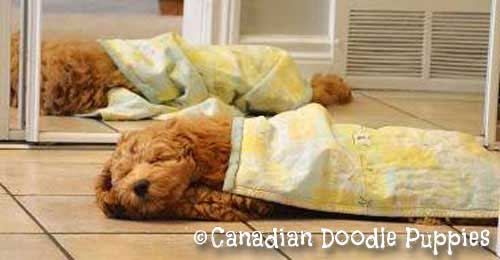
Feeding
- Until 6 Months of Age – Feed your pup 3 times a day (breakfast, lunch, dinner)
- 6 Months to Adult – 2 times per day (breakfast and dinner)
Our pups are currently eating NOW Puppy – Turkey, Salmon, Duck formula.
Water
Pups should have unrestricted access to water from morning until about 7pm. Limiting water in the evening will help limit your pups need to toilet in the night.
Crates
Crate training appeals to a dog’s natural instincts as a den animal. The primary use for a crate is to assist with housetraining and keep a puppy safe until it learns it shouldn’t chew on electrical cords or furniture. However, if a crate is not used correctly, a dog can feel trapped and frustrated. Never use the crate as a punishment. Puppies under six months of age shouldn’t stay in a crate for more than three or four hours at a time. They can’t control their bladders and bowels for that long.
For more information on crate training, please see the attached:
Training
 Housebreaking
Housebreaking
House training can be one of the most difficult and important parts of training your dog. It can be frustrating and definitely demands a lot of effort. Although it is possible to avoid accidents in the house at a young age through extreme diligence on the part of the family, full house training takes several months. A young pup can’t be expected to hold their need to toilet for long, so if you aren’t paying attention, don’t be surprised to find a mess in the house.
You can find some great basic tips on house training at: 10 Easy Steps to Housetrain Your Dog.
If these efforts aren’t working, a great resource for a more comprehensive approach can be found at: The House Breaking Bible
Respectful Interaction
Puppies and dogs deserve to be treated with respect. They are not stuffed animals, but living creatures with their own desire for affection and respect. Puppies should not be carried around, but allowed to walk freely or, if they are to be restricted, on a leash. Puppies should not be restrained or forced to sit with someone they don’t want to. Puppies should be invited to interact. If they accept the invitation, they should be handled gently and respectfully. If they decline the invitation, their refusal should be respected. As a reminder of the importance for respectful interaction, see the video at: Tips for Respectful Interaction. This site also has many wonderful resources for families.
For tips on what defines respectful interaction, see the posters at: How Kids and Pets Should Interact
For tips on what defines DISrespectful interaction, see the posters at: How Kids and Pets Should Not Interact
Physical Exercise
Puppies have lots of energy and need to exercise. The most common cause of behaviour issues is a lack of exercise and mental stimulation (see below). The following link explains the importance of exercise, as well as the limitations that must be respected with a young pup: Puppy Exercise Chart.
Mental Excercise
Mental exercise is as important as physical exercise. This means challenging your pup to use its brain! A dog’s most sensitive sense is its nose, and challenging its nose is one the best ways to use its brain. Visit this site for more information: What is K9 Nose Work.
Here is a quick list of some fun nose work games: 8 Fun Scent Games Your Dog Will Love
Training and sports (obedience, agility, fly ball, etc) are also great ways to challenge your dog mentally. There are many puzzles and games available for your dog. Here is a site that provides some examples: Dog Puzzle Games
Behaviours
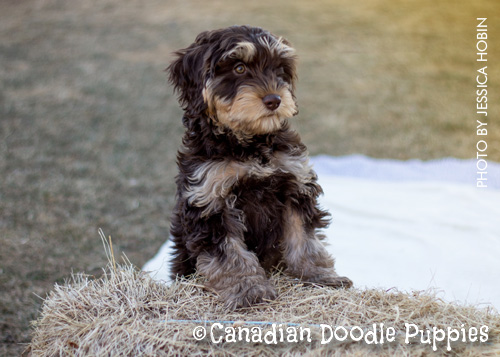 Normal Puppy Behaviours
Normal Puppy Behaviours
Your puppy is a baby. Just as we don’t expect babies to behave like adolescents or adolescents to behave like adults, it is important you keep your expectations reasonable. Jumping, nipping or biting, chewing, toileting accidents, limited attention span, grabbing objects and running off, not listening, etc., are all normal puppy behaviours. It is our job to teach our puppies how to live in our world, according to our rules, in a gentle and positive way. Please see the attached Normal Puppy Behaviors document for further information on the source of these behaviours and check out some of the resources noted below for tips on how to address them.
Behavioural Issues
Obedience issues and behavioural issues are not the same thing. Sometimes our pups need more one on one focused effort to address behavioural issues. Often the best way to deal with behavioural issues is to hire a trainer or behaviourist to come to your home for a one on one consult. We recommend trainers that use positive training methods only.
Balanced trainers use a combination of positive and aversive training methods. We do not believe any type of aversive training is acceptable for our dogs. Finding a good trainer or behaviourist isn’t easy as there are no regulations or common certifications that can help guide you. If you require assistance finding a good trainer or behaviourist, please ask or see our Local Doodle Services / Trainers web page.
Formal Training
To best teach your pup how to live in our world, through socialization and training, it is important to understand the developmental phases of puppies. Their reaction to similar stimuli will be different depending on their stage of development. A good description of these phases, broken down into 7 time periods can be found at: Stages of Puppy Development
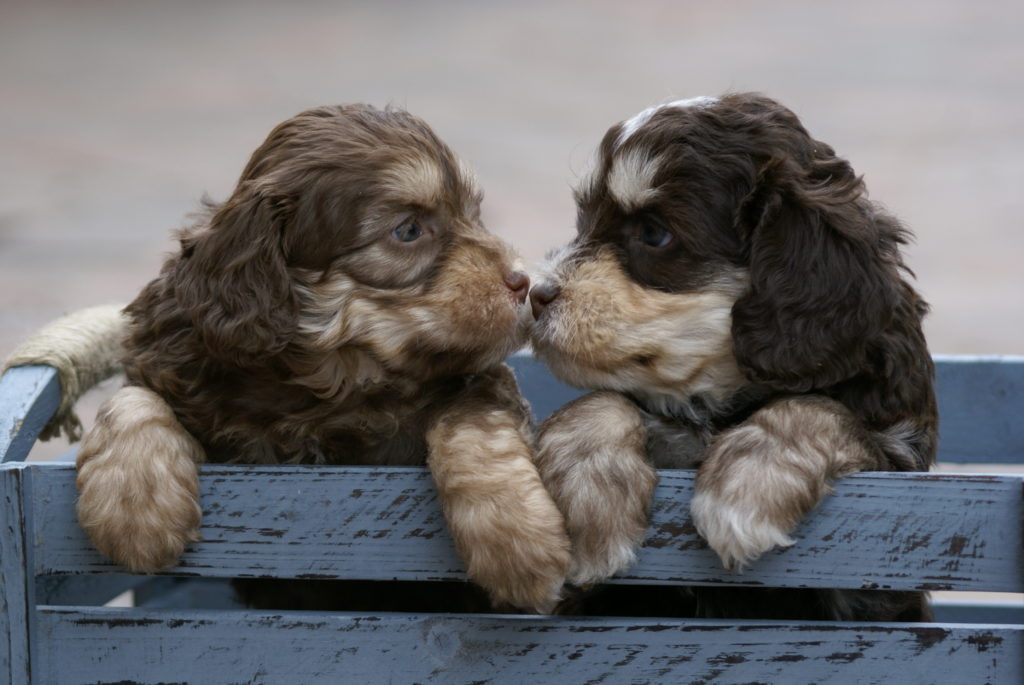
Puppy Socialization
Step 1- Good socialization may be one of the greatest gifts you can give yourself and your dog. Socialization is the first step in creating a well-behaved dog.
A great article on the importance of socialization can be found at: Socialization for Puppies
The goal is for your puppy to have positive experiences, not neutral or negative ones. You must be careful to monitor your puppy’s threshold for the experience and not push it beyond that threshold or it will become negative. Once the pup has had a negative experience, you need to work harder to turn it into a positive experience. All experiences can be taken in ‘baby steps’ to make sure you keep them positive without crossing the threshold. Present them in a way that your pup can draw confidence from you, without coddling them.
Puppy Socialization Classes are also important to provide an opportunity for your pup to interact safely with other young dogs in a controlled and supervised environment. Once your pup has had its second set of vaccines (DAP), it can attend puppy socialization classes.
Attached is a useful socialization checklist from Dr Sophia Yin’s web site. It lists the situations to expose your dog to for optimal socialization. Dr Yins’ Puppy Socialization Checklist.
Basic Obedience
Step 2- Once your pup has graduated from Puppy Socialization Class, they are ready for Obedience Class. Basic Obedience Classes will help you with the five most important commands: Sit; Come; Stay; Down; Leash Walking. They also provide an opportunity for your dog to interact with other dogs in a controlled and supervised environment. You can find some simple tricks for teaching your dog these five commands on your own at: Obedience training
Advanced Training
Step 3- If you are interested in going beyond basic obedience, but not interested in competing, you may be interested in the Canine Good Neighbour Certification. You can find information at: Canine Good Neighbour Program
If you need assistance finding an obedience school, we will be happy to recommend some to you on our Puppy Resources / Local Doodle Services / Trainers web page.
Veterinary Care
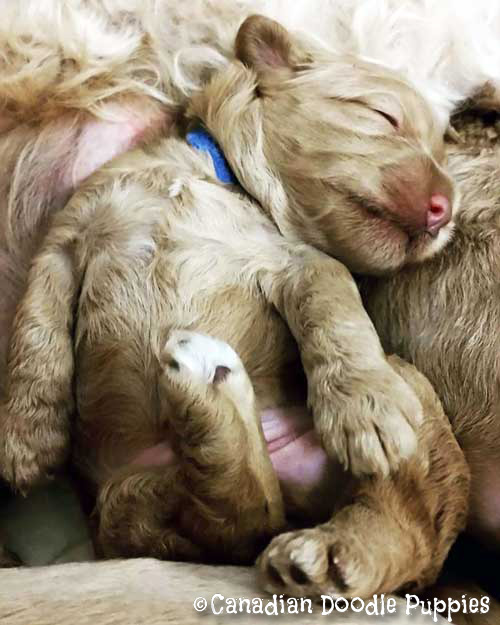
New Born Austrailian Labradoodle Puppy
Going Home – Your pup is going home to you microchipped, and with its 1st set of DAP Vaccines. Spay/neuter must be completed before your pup is 7 months of age.
DAP Vaccines include:
Within the first 5 days – You are required to take your pup to a Vet for it’s first check-up. Please make sure they check your pup’s incision site.
At 12 weeks of age – Your pup will need it’s 2nd set of DAP vaccines.
Between 16 – 20 weeks of age – All dogs require a Rabies vaccine after 16 weeks of age. If you can wait until 20 weeks of age, it is better for your dog.
At the time your Vet will also suggest a set of Non-Core Vaccines to give your puppy additional protection.
Non-Core Vaccines include:
Only one vaccine should be given at a time! You should wait a minimum of two weeks between vaccines. The exception would be Bordetella, which can be given at the same time as DAP.
Vaccines demand a significant immune response and attacking your pup’s immune system with multiple vaccines creates short term and long term health risks. Please refer to the attached Puppy Vaccinations for additional details on vaccines. Also discuss vaccine protocols with your Vet.
Dogs need protection from Heartworm, Fleas, and depending on where you live, Ticks, for 6 to 9 months of year (the warm months). Depending on which heartworm medication you choose (or if your pup is going home in the winter when this protection is not required), your pup may also need monthly deworming. Please discuss the appropriate options for protecting your pup from these pests. If you would like help finding a good veterinarian, please refer to our Local Doodle Services / Veterinary Clinics list.
Grooming
Brushing and Trimming
Teaching your puppy to enjoy brushing can take time and patience. Cooperation should be rewarded. Required tools include: slicker brush, mat remover, double toothed comb, grooming shears. Pups should be brushed once a week. You can break it up into smaller brushing sessions over the week, as opposed to doing the entire body in one sitting each week. Brush your dog right to the skin. Brushing only the top coat will leave your dog’s coat matted against the skin, even though it looks loose at the ends. You can find more information about how to brush your dog at: How to Brush Your Dog
If you prefer videos to help get you started, there is a whole series at: Grooming Sully Part 1 – 4
Trimming the hair between their foot pads limits dirt sticking to their paws. Trimming the hair around their bums helps with hygiene. Trimming the hair around their eyes helps them see properly.
Bathing
Your pup should be bathed once per month. Rinsing them, when dirty, more frequently is okay, but bathing too often upsets the balance of the acid and oil and their skin. Brush your pup before you bath it. Use a mild puppy shampoo. Rinse thoroughly, towel dry, and brush again. For some additional tips on how to bath your dog, please see: How to Give Your Dog a Bath
Formal Grooming
Your pup will need their first formal grooming at 4 to 5 months of age. After that, they will need to be groomed every 8 to 12 weeks, depending on how short they are cut, how often you brush, and therefore how long you can leave their coat without matting. Once your dog starts to matt it is critical you get them groomed soon after as they will be very quickly covered in matts. Having a matted coat is uncomfortable for a dog – kind of like having a ponytail that is too tight, except all over your entire body. If your dog starts to matt in peak of winter, it is better for you to get them groomed quickly and provide them with a coat than wait for the weather to warm.
A more comprehensive source for do it yourself grooming is the Doodle Comfort web site.
Grooming takes several hours and is not an easy task. It may be easier to find a professional groomer for your dog. For assistance in finding a good local groomer, please ask us or visit Puppy Resources to see our list of Groomers.
Ear Cleaning
Your pup’s ears should be cleaned once per week. Like all grooming activities, it is important to acclimate your dog to this type of handling. Patience and rewards are key. To clean your dog’s ears you need a cleaning solution and cotton balls. The technique for cleaning ears is explained at: How to Clean Your Dogs Ears
Teeth Cleaning
Provide your puppy with lots of hard chew toys, such as bully sticks or sweet potato chews to help keep their teeth clean. We do not recommend rawhide or commercial dental chews. Your pup’s teeth need to be brushed once per week. Again, as with all grooming activities it is important to acclimate your pup to this type of handling. Remember – patience and rewards are key. Tips on teeth brushing can be found at: How to Brush Your Dogs Teeth.
Nails
Your pup’s nails need to be trimmed every two weeks. You can find instructions on how to trim nails, as well as a diagram on the anatomy of a dog’s nail at: How to Trim Your Dogs Toenails
Responsible Dog Ownership
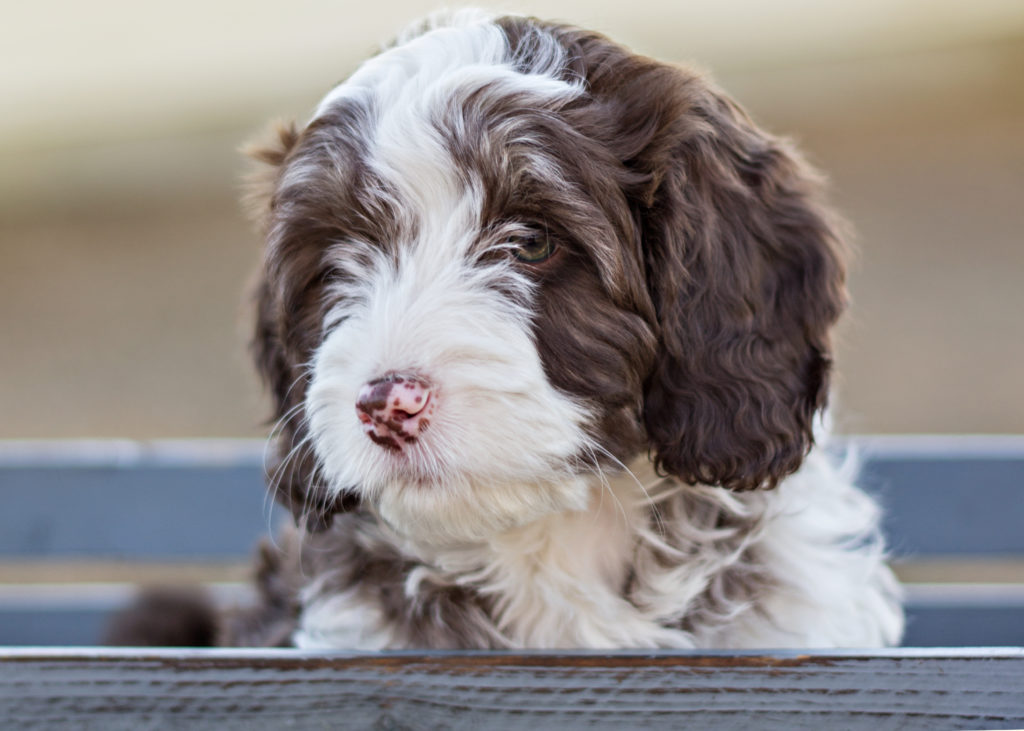 Responsible Dog Ownership means being the best owner/caregiver to your dog that you can be. Much more than providing “food, water, and shelter” for your dog, responsible dog ownership is the obligation dog owners have to incorporate their dogs into their family and into their community.
Responsible Dog Ownership means being the best owner/caregiver to your dog that you can be. Much more than providing “food, water, and shelter” for your dog, responsible dog ownership is the obligation dog owners have to incorporate their dogs into their family and into their community.
You can find more information about responsible dog ownership at these sites:
- Responsible Dog Ownership
- Responsible Dog Owners of Canada (Ottawa based).


